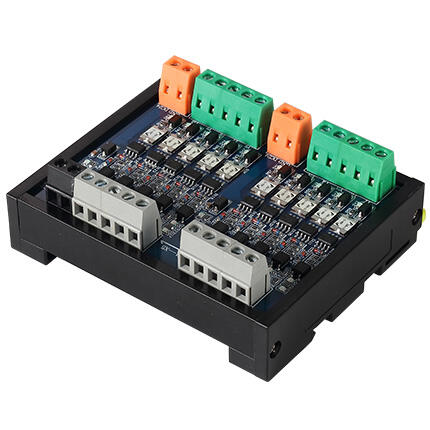One of the essential elements you need when it comes to controlling separate electrical devices is a relay module. A relay module like from Qingjun is best to be thought of as a type of switch. This switch makes a normal separation that protects digital components from the computer component not controlling them Starting with electronics can seem tricky, and figuring out which relay module to buy for your project is usually harder than it should. But don’t worry! With that being said, let us dive into some 5 good tips for choosing your relay module.

Select the Relay Module That You Need
Before you go off and start purchasing a Relay Modules, however it might be worth thinking about what exactly you need. Relay ModulesThere are many different kinds of relay modules available that will do various jobs or tasks. Selections can include solid-state relay modules, reed relay modules and electromechanical relay modules. There are pros and cons to each, so do your research on which one will best benefit you in the new site that is brewing. Learning more about these styles can help you develop your project to work better.
Voltage and Current.
One other important tip here, is to not forget how much voltage and current your project will require. Voltage is The Pressure that pushes Electricity through the wires and Current as a Flow of electricity. Just ensure that the relay module you select is capable of switching on/off this much electricity required by your device. Using a weak relay module incapable of supporting the right voltage and current makes it break or stop working normally. This might result in a headache later on during your project, so be two times sure about these prerequisites before deciding to go for it.
Look for Protection Features
One tip when selecting a relay module is to look for the units with built-in protection. These features are there so that the module stays safe in case of any electrical problems like more voltage or current etc. This, These may include the likes of overvoltage and overcurrent protection. These things are quite essential to have because they assist you in making your device up and running a safely functioning direction. By procuring a relay module with these safeguards, repeated issues of the same nature would be outside any reasonable margin.
Check Compatibility
The second key point to keep in mind when purchasing a relay module is whether it supports the microcontroller or PLC (Programmable Logic Controller) family. This means you have to check that the relay module can be accessed and integrated successfully with another project components. This problem would be a disaster and could make the project without working for not being compatible with your microcontroller or relay module PLC. It pays off to verify this beforehand before you make the ultimate decision.
Compare Costs and Reliability
And last but least, when the time comes to get a relay module or spdt relay module look that prices and brand reliability. You need a working relay module, but you also require it to be cheap. Doing a bit of comparison shopping when it comes to the cost and reliability levels you can obtain with various brands is going to help direct your needs into what will fit your budget. In many cases you really do get what you pay for, and sometimes a marginally more costly module can be vastly more dependable — saving money in the long run if that means installing fewer replacements hosting accounts.

 EN
EN
 AR
AR BG
BG HR
HR CS
CS DA
DA NL
NL FI
FI FR
FR DE
DE HI
HI IT
IT JA
JA KO
KO NO
NO PL
PL PT
PT RO
RO RU
RU ES
ES SV
SV TL
TL ID
ID SR
SR SK
SK SL
SL UK
UK VI
VI SQ
SQ ET
ET GL
GL HU
HU TH
TH TR
TR GA
GA MK
MK HY
HY KA
KA BS
BS MN
MN